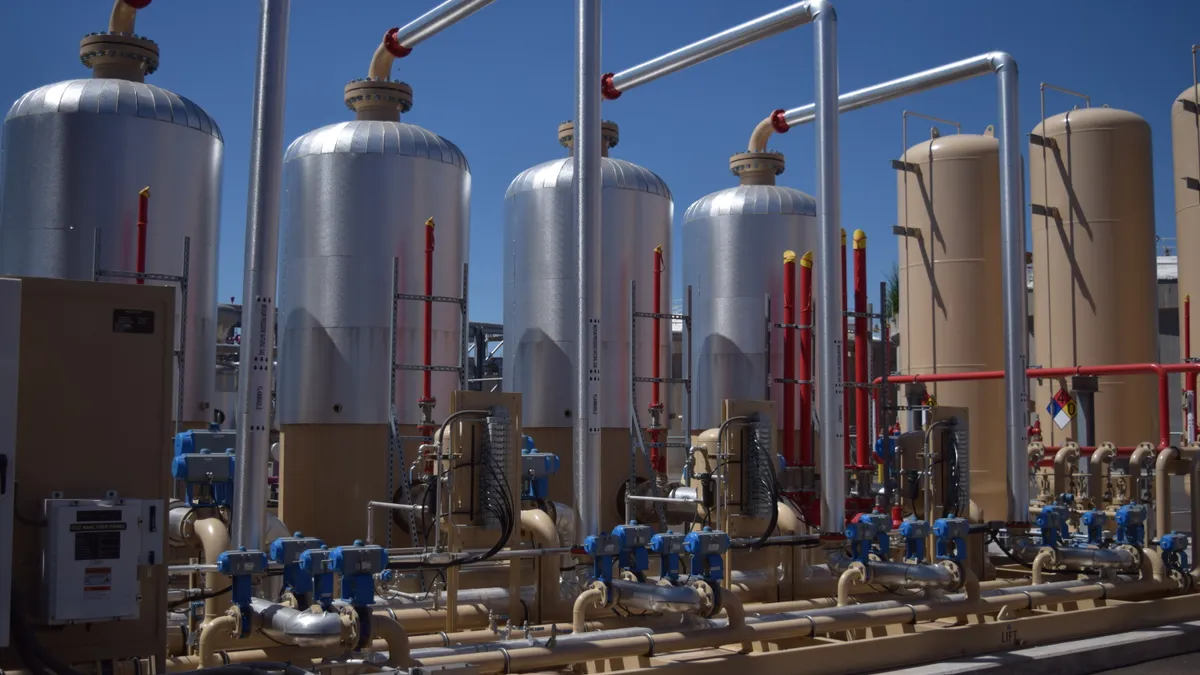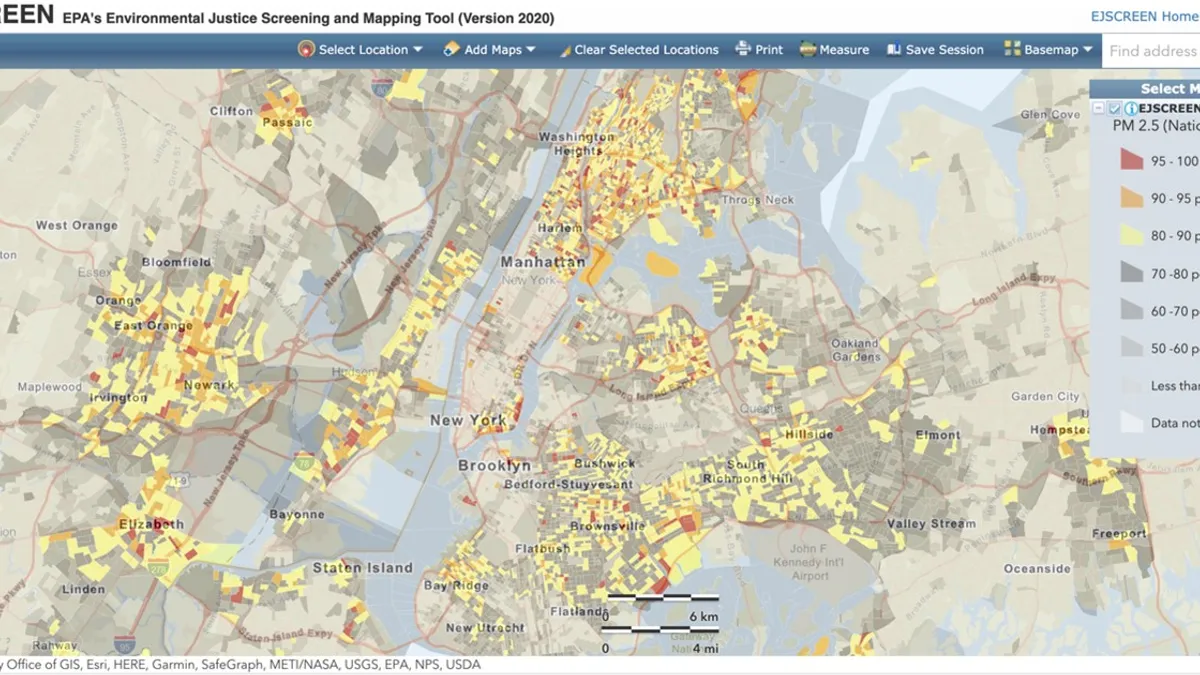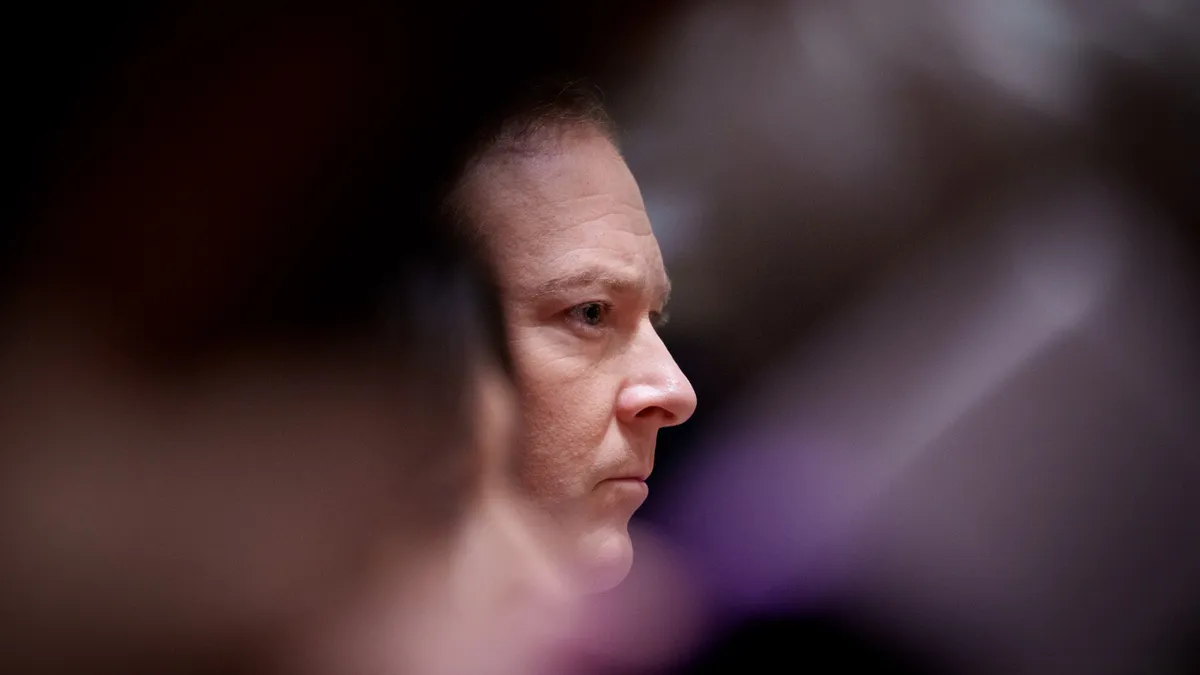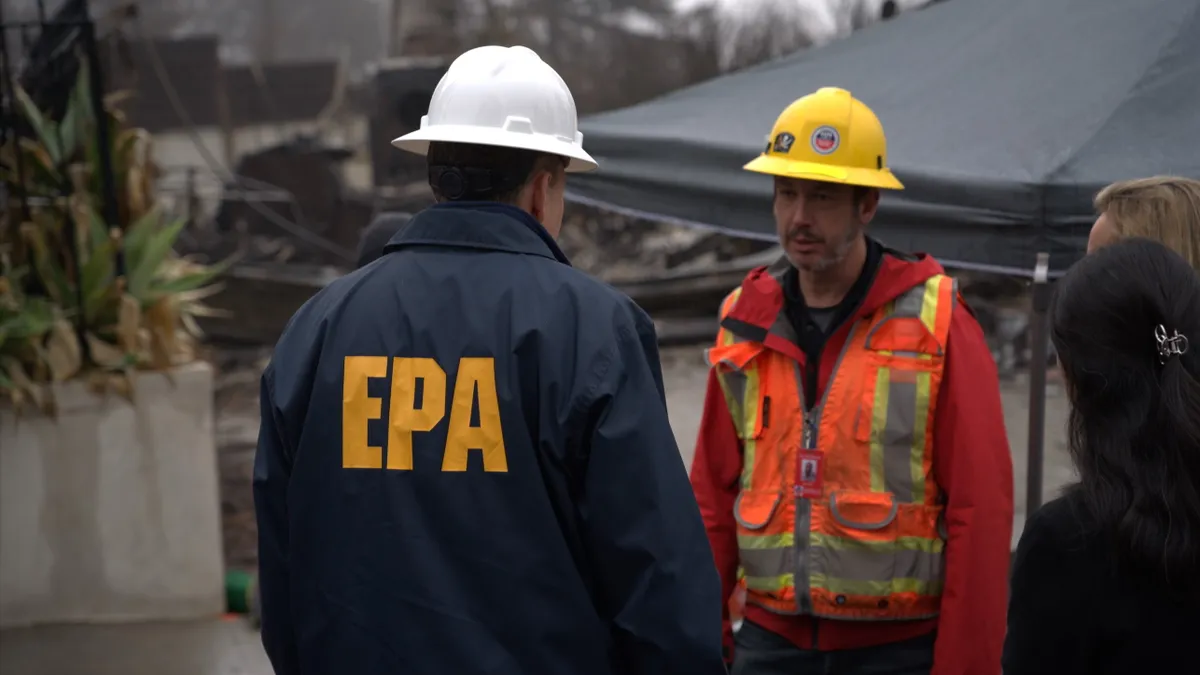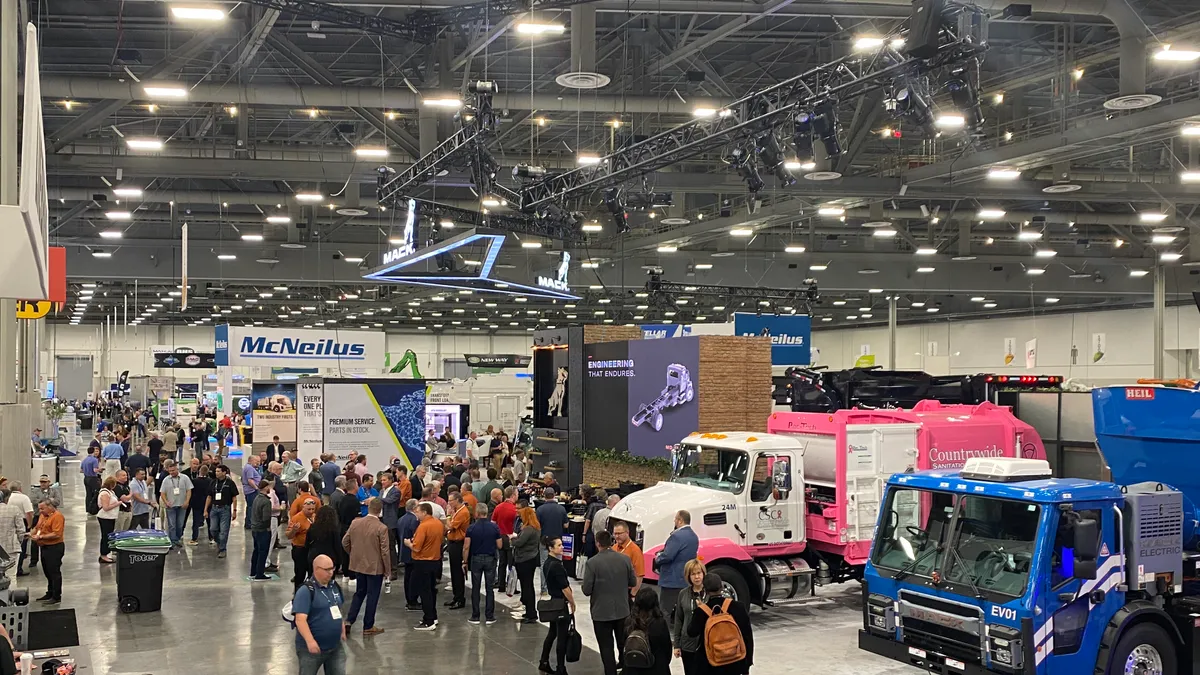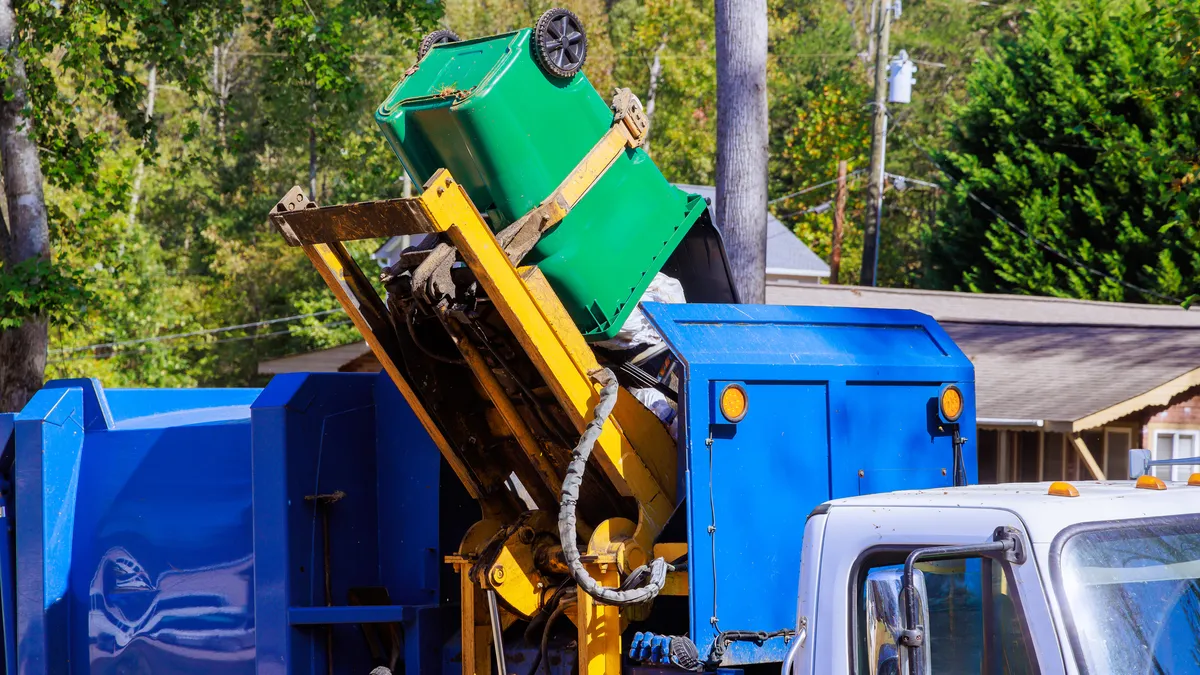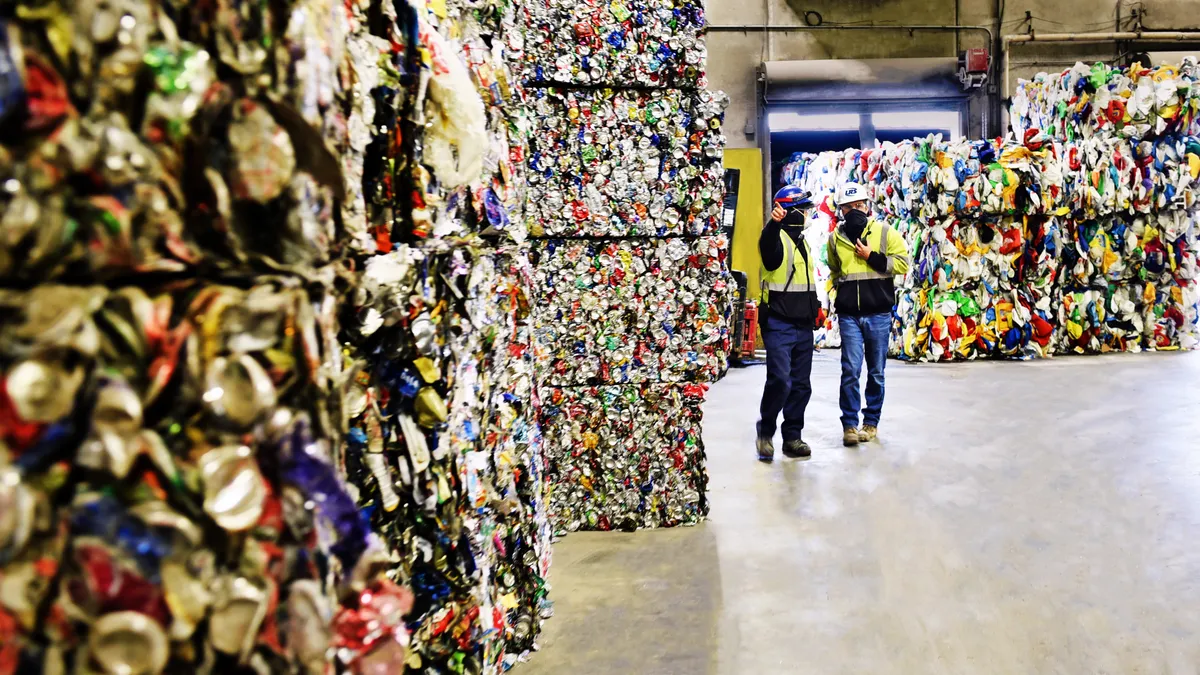Energy company Ameresco sees renewable natural gas as a tool for reducing greenhouse gas emissions, and its leaders believe landfills will be a key player in ramping up supply in coming years.
The Massachusetts-based company has been building a variety of renewable energy and energy efficiency projects since 2000, including solar, wind, wastewater biogas, battery and energy storage and microgrid installations. A cornerstone of Ameresco’s business is its contracts with federal, state and local governmental entities, including the U.S. military, but Ameresco also works with private companies. The company reported revenues of $1.2 billion in 2021.
Landfill gas-to-energy projects are a notable part of its portfolio. One of its early installations was a partnership with WM and BMW, where Ameresco converted the car manufacturer's on-site power station to use methane gas piped from the nearby WM Palmetto Landfill in South Carolina. About half of the BMW site's energy comes from the project, Ameresco says. In 2021, the company announced the completion of a landfill gas-to-energy project with Republic Services at its McCarty Road Landfill in Houston, which Republic said offers a source for "low-carbon transportation fuel" and helps it make substantial progress toward its goal to send 50% more landfill gas to "beneficial use" by 2030.
Ameresco President and CEO George Sakellaris sees the company as well-positioned to support more renewable natural gas (RNG) projects in its portfolio in the coming years, especially as the country makes greenhouse gas reduction efforts a bigger priority and landfill operators position themselves as energy producers as well as waste management companies.
Waste Dive recently spoke with Sakellaris, along with Nicole Bulgarino, Ameresco’s executive vice president and general manager of federal solutions, and Leila Dillon, senior vice president for corporate marketing and communications.
The following interview has been edited for length and clarity.
WASTE DIVE: Your company has built several landfill gas-to-energy projects for clients that include private companies, the military and municipalities, but you also work on other renewable energy projects as well. How does Ameresco fit into the larger renewable energy, landfill gas and RNG market?
GEORGE SAKELLARIS: We got into landfill gas-to-energy back in 2001 because, as you probably know, methane is more destructive to the ozone than anything else. Since then, one project we did, which was very interesting, is the landfill gas energy project down in South Carolina with BMW [at WM’s Palmetto Landfill in Spartanburg, South Carolina]. We took the methane and cleaned it at the site, and we built a 10-mile pipeline to go to the BMW facility. They had a power plant, but they were using natural gas. We said we would convert the turbines to use this methane gas, and it’s been successfully operating ever since we completed the project in 2003-2004. The CEO of BMW came over from Germany and couldn’t believe the carbon footprint reduction accomplished on that particular plant.
Renewable electricity is a very good price right now, but recently we [are doing projects to] take landfill gas and convert it to RNG. We go one more step so we can bring it into the interstate pipelines and shoot it all the way to places like California, where we can get the best price for it. That’s what we’ve done with projects like the San Antonio wastewater and sewage system, where we took the biogas coming out of their digesters to a refinery plant. Then we took the renewable natural gas, we put it in the interstate pipeline and we ship it all the way to California.
You’ve also worked on projects at landfills to use part of the land for solar, such as in the solar energy system built in 2020 at the San Joaquin County landfill in California, which also has a separate landfill gas-to-energy setup. What do these types of projects accomplish?
SAKELLARIS: It’s something that we're doing to utilize wasted land with landfills. We work with the landfills and the EPA to install solar, working to not disturb what’s underneath [in the landfill], not disturb the membrane, but lay solar panels on top of it. As the technology evolves and the price of building goes down, you will find more and more applications across the country.
You work on diverse project types with diverse clients. What's Ameresco’s approach to choosing projects?
SAKELLARIS: Originally, we would be the ones to approach the landfill owners, or the municipalities, or cities and towns like Phoenix or San Antonio, or whoever manages the site, like Waste Management, and ask them if we can develop the project. They would say, 'Sure, I want X amount of money for my methane,' and then we go and develop it. But nowadays, they are the ones who issue the RFPs, and then we'll put the package and proposal together.
If we're successful, we’ll go to the site and find out how much potential methane the client has and how many years or [how much] supply we have within our economic analysis. We have a great team to identify how much potential each site has. That’s the big difference now with a request for proposals because there are five, six companies like ours that do the same thing, and [clients] go to all those companies to get the best price for the system and the methane out of it.
Now that it's a little bit more competitive and landfill operators or other clients have a clearer idea of what they're looking for, I'm curious, how do you try to set yourself apart?
SAKELLARIS: There’s more competition than we had in the past because there’s more and more renewable natural gas that gets structured in the marketplace and more people beginning to talk about decarbonizing the national gas. We still compete very well because we’ve been in it for longer than just about anyone. [As of January] we have 14 sites under development now that will be up and running over the next few years.
LEILA DILLON: A key component here is winning these deals. I'm thinking of the Southern California Edison deal that we won at the end of last year [to design and build battery storage systems meant to strengthen grid resiliency against extreme weather in the state]. Nicole’s group has done a tremendous job putting in incredibly large, comprehensive projects with the different agencies and the federal government. We have a deep portfolio of comprehensive projects that has enabled us to build credibility, to have a track record. That really gives us that upper edge, I think, in a lot of these proposals.
NICOLE BULGARINO: We’ve actually done two landfill gas projects — one for the Air Force, one for the Coast Guard — where we're able to use that approach. These types of projects involve elements... like [methane produced] either on-site or by a neighboring landfill to provide steady, locked-in energy stores for them for 20 years.
SAKELLARIS: We’re able to go to a particular customer with what we call a holistic solution, so all the way from an energy efficiency concern for more resiliency to providing energy storage, whether it be landfill gas-to-energy, or to renewable natural gas, whatever the case might be. The technical expertise we have to address those issues also gives us a competitive advantage in the marketplace, especially for federal government projects.
What are some of the higher-level federal factors that affect the decision-making process for Ameresco and other landfill gas-to-energy companies in the space?
SAKELLARIS: We [hoped] a bill like the Build Back Better bill would go through [Congress] because it's expensive to build plants — it's like building a small refinery. So to the extent that we have investment tax credits, or accelerated depreciation, and so on that were part of the Build Back Better bill, that would help. We cross our fingers that [portions of it] will pass in one way or another, even if they don't pass all the other stuff as one large bill. If you're serious about net zero down the road, we need a climate change bill to get enacted rather than just talking about it. As far as other elements we keep talking about and want to see, a simple carbon fee could also raise more money.
BULGARINO: The whole infrastructure funding package that came out does bring money into projects for green gas, or for meeting decarbonization goals — not just federal projects, but also for municipalities and even schools and communities that are trying to get to these goals as well. We’re also watching what happens to the tax extenders and where they end up.
I think one of the drivers we look at from a utility perspective, from gas companies even to electric companies, is that they are targeting aggressive state energy goals, and they're going to need something more than solar and wind on their path to get to a net-zero solution or renewables solution, and we think RNG is a very viable way to get there.
There’s a big push to tackle organics diversion from landfills, with the EPA recently updating its food waste guidelines and California’s implementing SB 1383 this year, too. Where is Ameresco in terms of organics diversion and related anaerobic digestion projects, and do you plan to expand that portion of the business as more of these laws go into effect?
BULGARINO: We do have some projects that we're starting to look at, where there's other sources that you're able to use for energy, whether it's food waste or otherwise. There's definitely a trend that will help that market. It's just a matter of collecting all of that material from different sources, which could be a challenge, versus a wastewater treatment plant or landfill, where it's already one big system that you're collecting from. But it's definitely part of the solution.
SAKELLARIS: People don't realize that 40% [of U.S. electricity generation] is natural gas. Somehow we have to decarbonize. Getting more renewable natural gas is going to play a key role in accomplishing that, whether it’s coming from a landfill site or anaerobic digesters. We need some kind of a firm, long-term national policy and to address all these issues and help diversify the grid.
What is Ameresco’s approach to public engagement, especially in terms of environmental justice considerations? In the last couple of years, there have been a lot more discussions about landfills needing to be better about communicating with their neighbors before projects happen.
DILLON: When we go and work on a project [in a community], we do job creation, economic simulation, so there's a lot of environmental justice, environmental equity that comes into play because there's a lot of good that we can bring to those locations. The community benefits from cleaner air, and they benefit from more jobs. That’s a key factor, and a lot of the projects that we look at are where it would be beneficial. Our Phoenix RNG [wastewater treatment] plant is an example where the mayor there has spoken about how it benefits the local economy.
SAKELLARIS: For these kinds of projects, there is also an opportunity to get closer to the local community through something like scholarships for students that come from that particular community.
What are some of the market trends that are driving business in this sector right now, and how do they compare with the last few years?
DILLON: There's a couple of things that we see driving the market right now in terms of trends. One is obviously resiliency. That really started with the federal government, but now we see that really percolating down to the other markets where we work. Energy security is a component of that. Grid stability is driving a lot of action, and we really saw that with the contract we signed with Southern Cal Edison recently.
Also, there’s this big push for ESG, that decarbonization, that net-zero strategy. Then there’s environmental equity as a priority. The core drivers that we’ve seen in the past — cost savings, economic infrastructure needs — those are all still driving the market. But now we've added all of these other things that have really come about in the last 12 to 16 months or so. And we think that's going to really transform this industry in the coming months and years.



